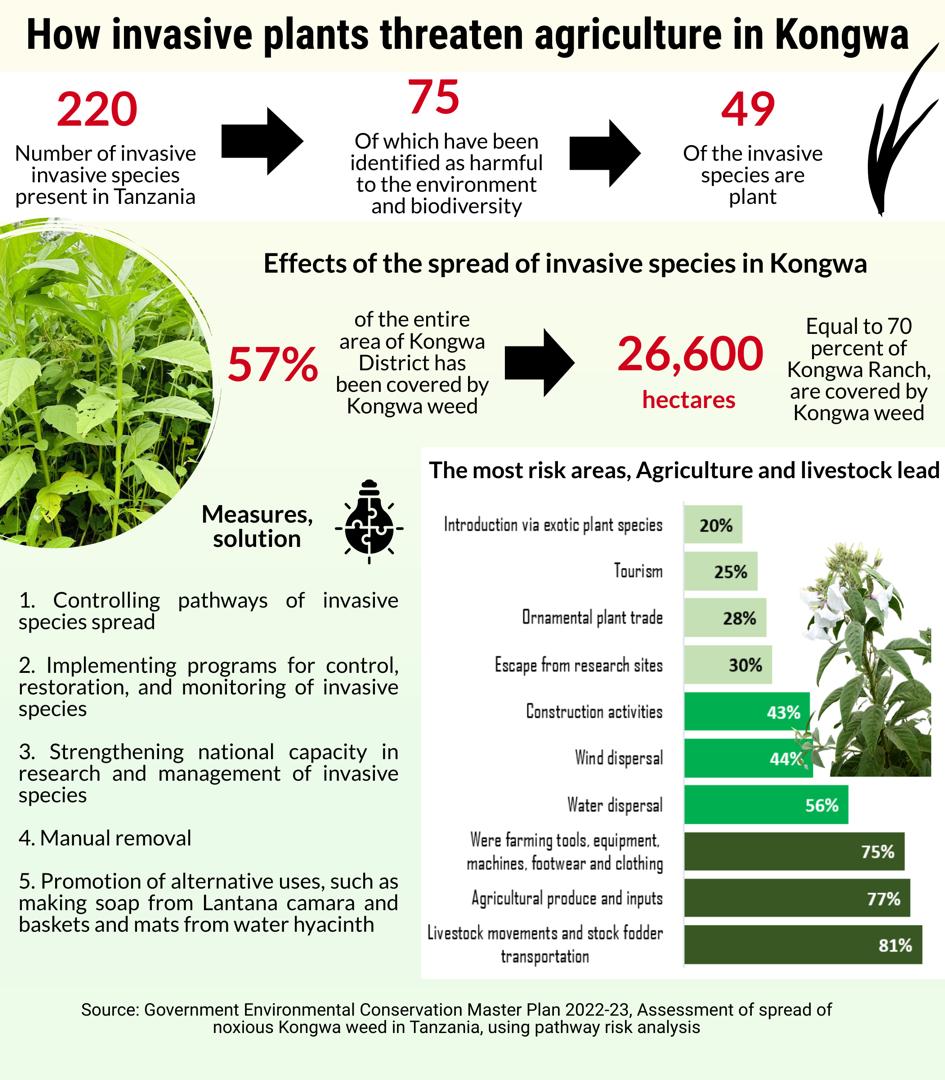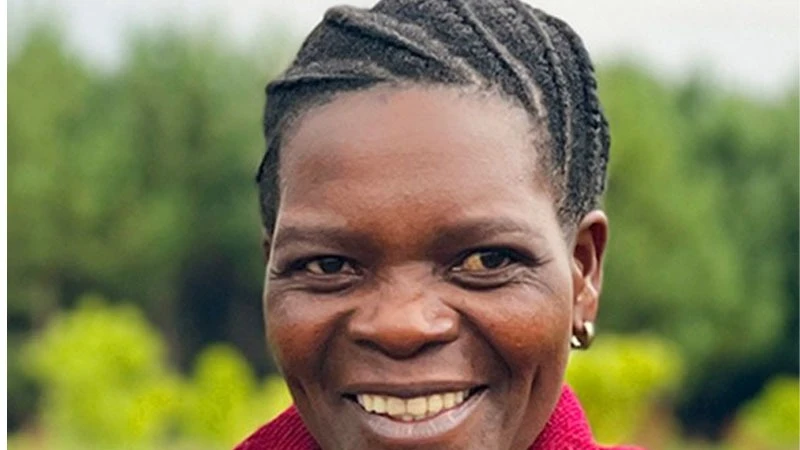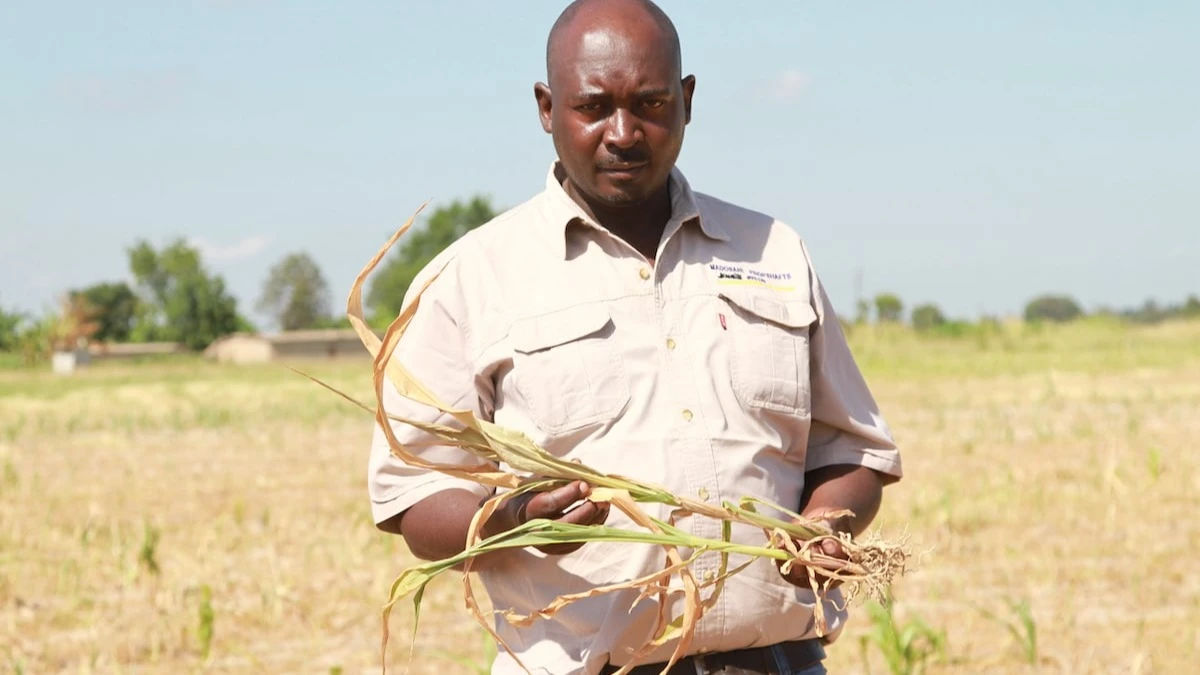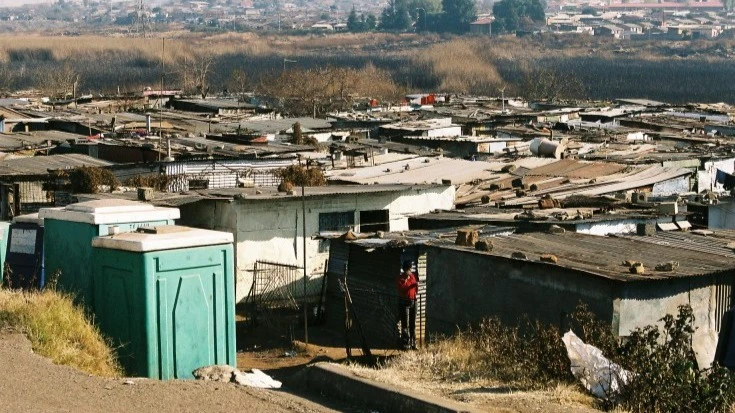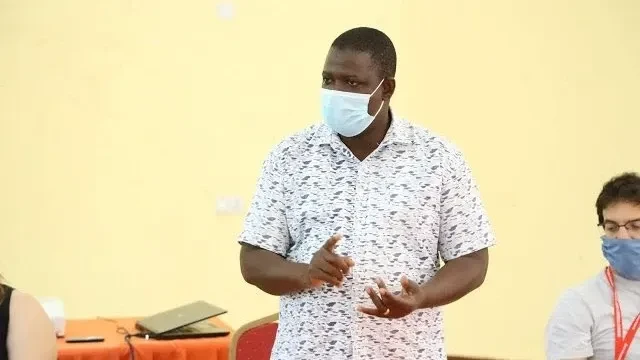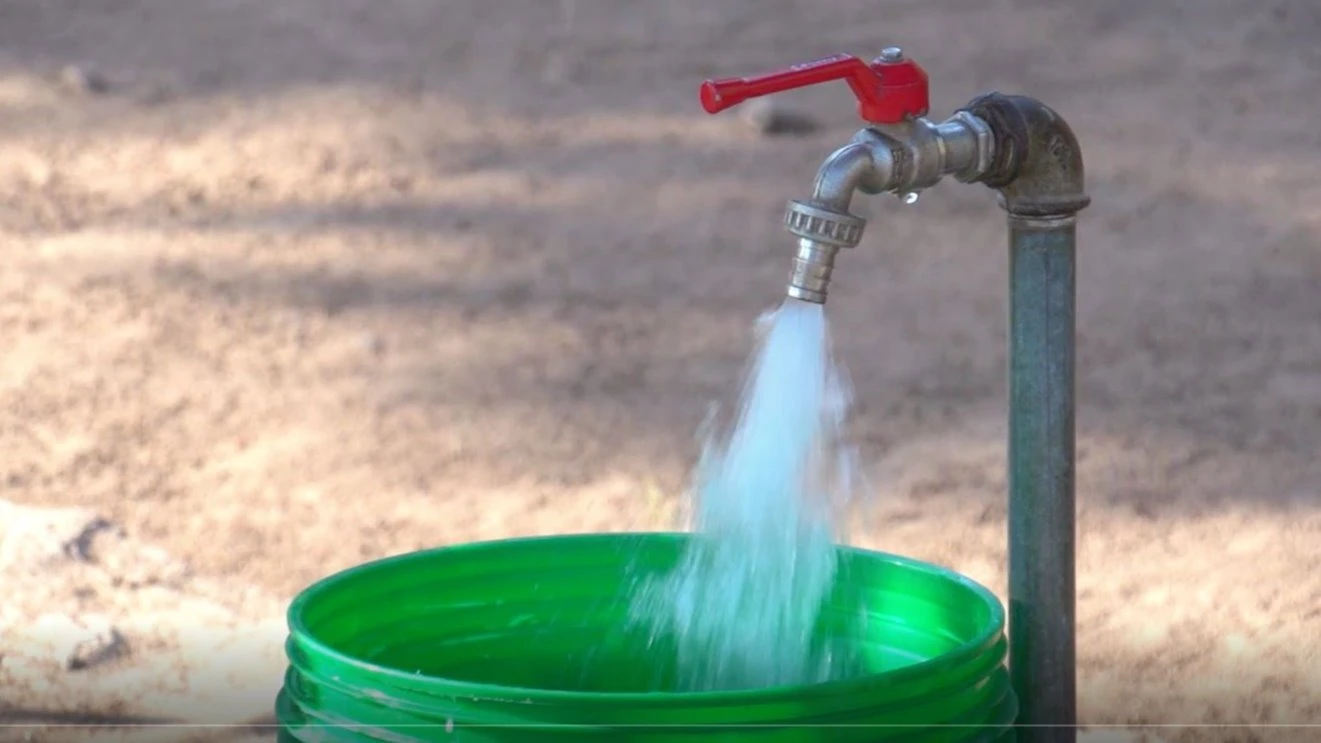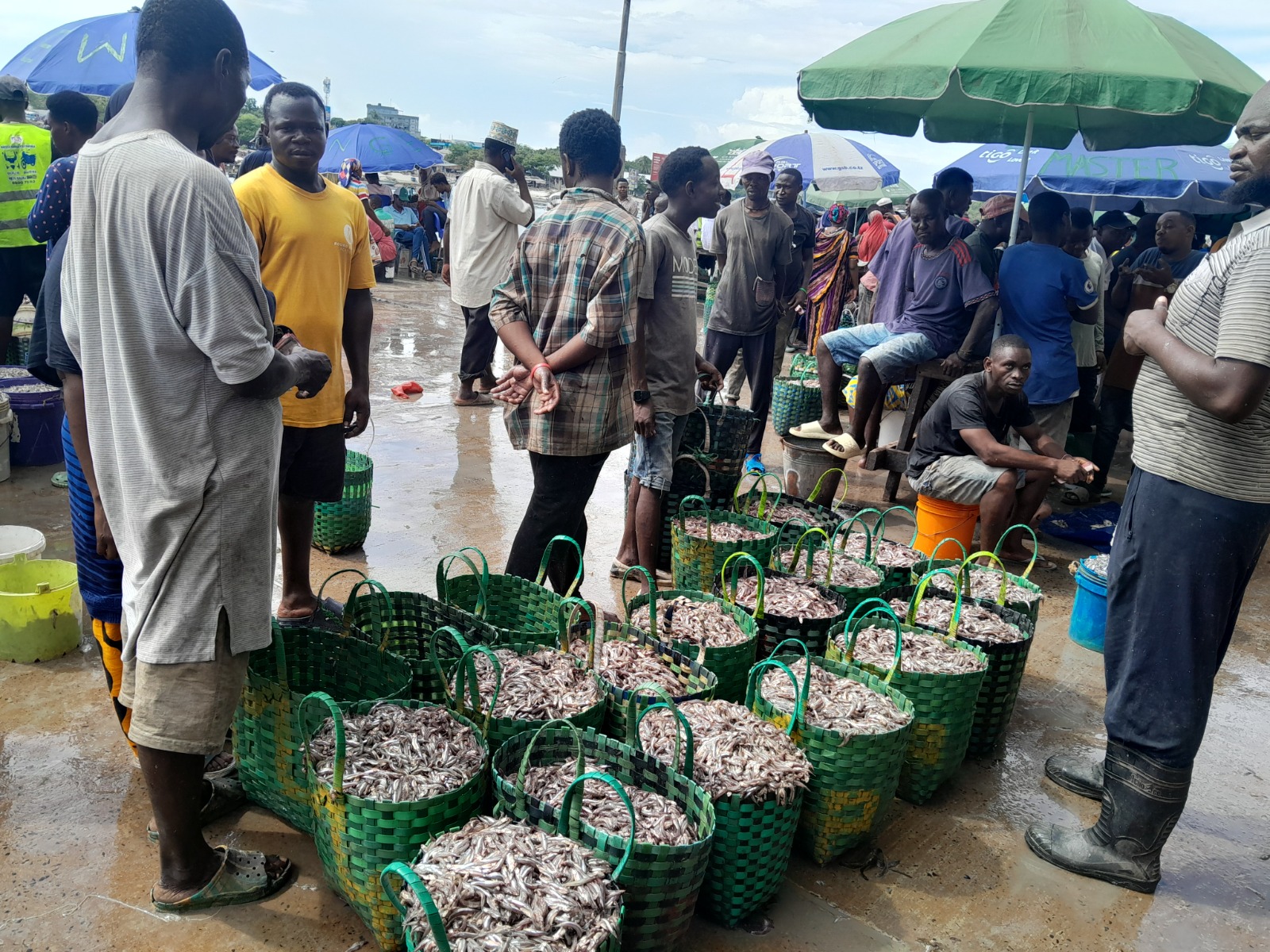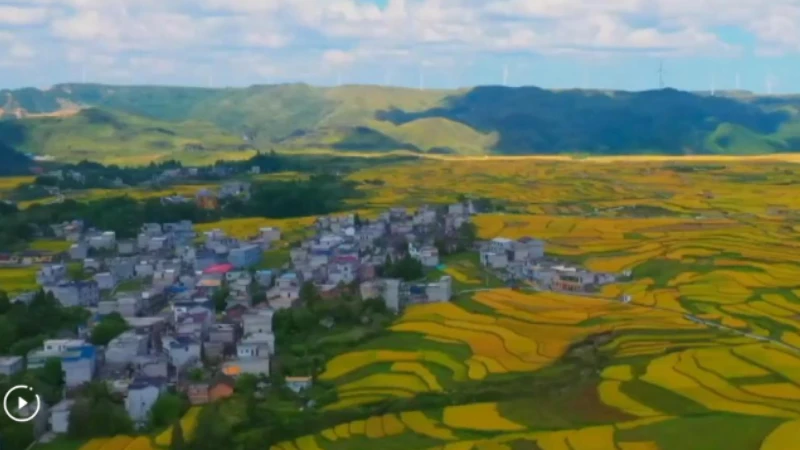Kongwa District’s rising threat of invasive plant threatens agriculture
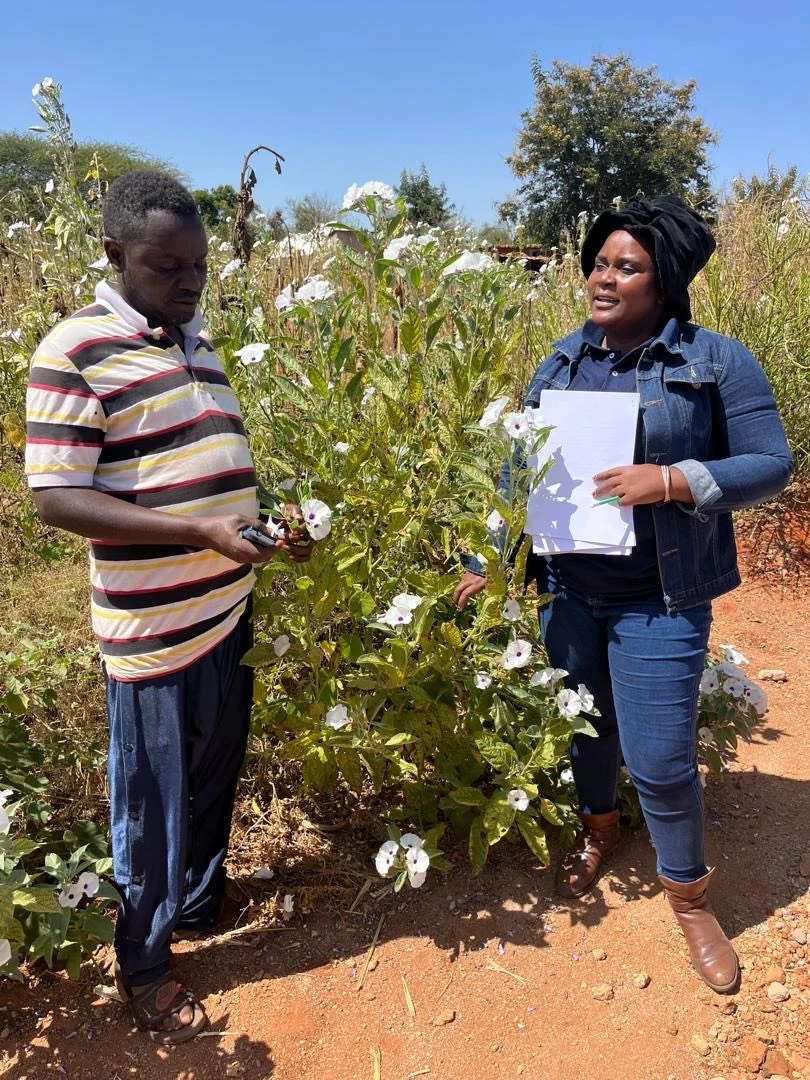
IT’S almost sunset but Musa Maile, a resident of Machenje village in Kongwa District, Dodoma Region is still in his 30-acre maize farm on the last day of harvesting.
He cannot believe what he sees. In a state of confusion, Musa revisits the farm hoping to find parts his workers may have forgotten to cover while harvesting or suspecting that some maize may have been hidden. However, his search yields nothing.
In distress, he recounts his harvest. The total matches the earlier count of only 40 bags of maize. Despite his tireless efforts and taking a loan of 5m/- (about $2000) to purchase fertilizers and pesticides, this marks the third consecutive year he has harvested a mere 40 bags from his 30-acre farm. Previously, he used to harvest 150 bags from the same acreage.
Maile is not the only person facing this predicament. According to Msafiri Mkude, Kongwa District Livestock Officer, 200 farmers in the area faced poor harvests, far below their expectations.
The ‘Mahata curse’
The primary reason for declining maize production in Kongwa is the invasive plant -Astripomoea hyoscyamoides, locally known as “Mahata” or "Kongwa weed."
This invasive plant, which began spreading in the early 1990s, has increasingly occupied farms. Its rapid growth and resilience causes significant damage to crops, leaving many farmers impoverished.
“Kongwa District is one of the hardest-hit areas. This invasive plant grows faster and more robustly than crops, choking them out,” Msafiri explained.
The assessment conducted by Wilfred Gerard Mkongera and others in 2020 on the spread of the noxious Kongwa weed in Tanzania revealed that livestock movements and stock fodder transportation contributed to 81 prcent of its spread. Other contributors include agricultural produce and inputs.
According to the 2022-2023, Government Environmental Conservation Master Plan, Tanzania is home to 220 invasive species, 75 of which have been identified as harmful to the environment and biodiversity.
Research conducted by Dr Upendo Richard, an ecology expert from the University of Dodoma in 2024 on the socio-economic impact of Astripomoea hyoscyamine revealed that the weed has reduced crop yields in Kongwa by up to 75 percent. This has significantly impacted household food security and nutrition.
The weed has also spread throughout the Kongwa Ranch in Dodoma, limiting pasture growth for livestock and further threatening livelihoods.
The weed's impact
Dr Richard explains that invasive plants like Mahata deplete the soil of essential nutrients, leaving crops stunted. “Invasive plants grow rapidly, dominate the area, and out-compete native plants. This disrupts pollination processes and leads to the decline of native vegetation,” he explains.
In Tanzania, the economic impact of Mahata has been devastating. Maile, who had hoped to use the profit from the sale of his harvest for loan repayment and support for his family, now struggles to provide basic needs of food, education among others.
Similarly, Charles Mazengo, another farmer, harvested only three bags of maize from his one-acre farm, barely enough for his household. He sold the maize to pay for his son’s travel expenses to Dar es Salaam for work. Now, he relies on food donations from friends and relatives.
“Invasive weeds are a serious threat to food security. They overrun crops like maize, sunflower, and peanuts, leaving many families without sufficient food,” Mazengo narrated.
Ringo Ilingo, Chairperson of the Tanzania Sunflower Processors Association (TASUPA), warned that invasive plants could disrupt the production of cooking oil if left unchecked.
“The government already spends a lot of money importing cooking oil. A decline in sunflower production due to invasive weeds would further burden the economy, and even threatening local industries,” Ilingo explained.
Livestock farmers are also not spared. Boniface Kedmon lost 10 of his animals last year due to water and pasture shortages. He was forced to sell 20 more, leaving him with only five goats and two cows.
“These invasive plants consume large amounts of water, causing drought conditions on farms. If you delay weeding, they dominate the fields, killing crops and reducing fodder for livestock,” Kedmon explains.
Fighting the problem
According to Msafiri, experts from the Sokoine University of Agriculture (SUA) are researching ways to manage invasive plants.
“Initially, there were suggestions to use herbicides to kill the weed, but concerns about environmental impacts led us to focus on educating farmers on early detection and control measures,” he elaborated.
Kongwa District Executive Director, Dr Omary Nkullo noted that although controlling invasive plants remains a challenge, local authorities are emphasizing public awareness campaigns.
“Our experts are teaching farmers to uproot invasive plants early to prevent them from spreading across farms,” Dr Nkullo explained.
Dr Richard suggests conducting thorough research before introducing new plants to prevent the spread of invasive species.
She also recommends building farmers’ capacity to manage invasive weeds and adopting an integrated weed management (IWM) approach. This could include combining cultural practices like uprooting weeds with natural herbicides such as Melia azedarach extracts.
Speaking at an investment forum in Dodoma in August 2024, Minister of State for Planning and Investment, Prof Kitila Mkumbo, emphasized the role of agriculture in Tanzania's economy. “Agriculture is not just a source of food; it employs 28.6 million Tanzanians. To enhance productivity and ensure food security, we must invest in irrigation, modern technology, and fertilizer production,” Prof Mkumbo said.
While agriculture remains a lifeline for many, challenges such as invasive plants, pests, and poor seeds hinder progress. These issues must be addressed to help farmers achieve sustainable livelihoods and break the cycle of poverty.
Top Headlines
© 2025 IPPMEDIA.COM. ALL RIGHTS RESERVED


